Sitia is the easternmost city on Crete near the Cape Sidero, 64km from Agios Nikolaos. It is a city with about 10,000 residents, built on the west side of the bay of Sitia, on a warm and dry area. Sitia hosts the only airport in eastern Crete and the most important port, with ferries running to Piraeus, Milos, Rhodes, Kassos, and Karpathos. There are frequent bus services to Ierapetra and Agios Nikolaos, and great efforts are being made to improve the road network linking it with the rest cities of Crete. It is a very well organized city with many shops, tourist facilities, hospitals, banks, etc. The residents work mainly with agriculture and tourism.
In Sitia, apart from swimming in the long beach east of the city, you can stroll in the harbor, enjoy your coffee in the many cafes on the beach road, get lost in the old town with the traditional houses and the picturesque yards, visit the castle Kazarma and the ruins of a Venetian monastery. Moreover, you could visit the Archaeological Museum with exhibits from 3500BC to 500AC, all coming from the wider area of Sitia. A folklore museum exhibition also operates in the town with traditional objects of 19th and 20th century. Sitia area is famous for the kicak production of agricultural products; olive oil, wine and raki. Indeed, the olive oil of Sitia is one of the best in the world, winning several international awards every year.
Sitia is inhabited since the Neolithic Era. Minoan palatial buildings and walls have been excavated in place Petras and a plate of Linear A has been found there. The city is considered to be built at the site of the ancient Itia or Sitea, which was the home of Myson. Myson has been reported as one of the seven sages of antiquity, replacing Periander. Also, the ancient Etia (another name of Sitia) was Praisos’ Port. Praisos was the strongest opponent of Ierapytna city and its archaeological site covers a vast area, still not fully excavated.
During the Byzantine period, the town flourished as a commercial port. The medieval city flourished as a castle, i.e. was protected by a large wall, and the fortress Kazarma, located today on a hill near the port.
When the Venetians conquered the island, they gave great importance to the area and tried to fortify it. Sitia then faced a big boom in all sectors and became the largest city in eastern Crete. One of the greatest representatives of Greek Literature was born then, Vitsentzos Kornaros (1553-1613), with his famous love poem "Erotokritos" and the dramatic poem "The Sacrifice of Abraham".
A great earthquake in 1508 and the constant raids of the pirate Barbarossa in 1538 destroyed most of the town. In 1651 the Venetians demolished the fortification, before handing Sitia over to the Turks.
During the Ottoman rule, the city and its castle Kazarma were rebuilt and Sitia was given the Turkish name Avnie. This name lasted only for a while, because Crete was later liberated.
- 1
- 2

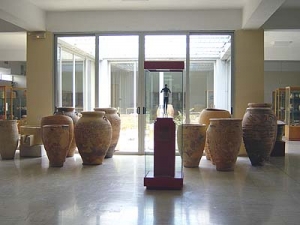
The Archaeological Museum of Sitia operates since 1984 and hosts the most important archaeological finds from eastern Crete (from Sitia, Palekastro, the islets of Mochlos and Psira, the necropolis of St. George, the palace of Zakros, the Hellenistic town of Xerokambos, Ziros, Makrigialos, Lefki island and ancient Itanos).
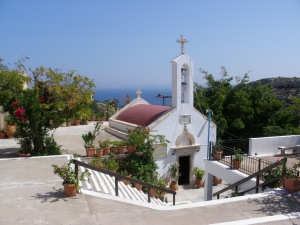
The Monastery of Panagia Faneromeni (Revealed Virgin Mary) in Trachilas area of Sitia is located on the edge of a steep area between the Cape Trachilas and Babakia, about 1.5km away from the sea and 8km west of Sitia town. It is built in a lush green area, next to the small gorge of Agii Pantes (All Saints), ideal for an easy walk.
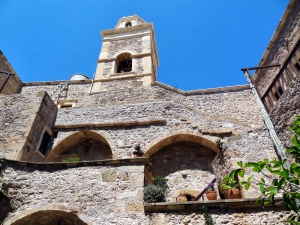
Toplou Monastery is located in the northeastern tip of Crete, at the base of Sidero Cape, 10km east of Sitia and 6km north of Palekastro. The monastery is one of the most historic monasteries of Crete and is known for its vast real property. In religious circles it is known as the Monastery of Panagia Akrotiriani, while the locals just call it the Great Monastery.
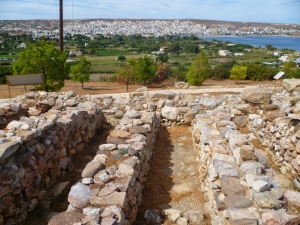
The Minoan settlement of Petras was built on a low hill near the present city of Sitia. It is believed by many researchers that this was the site of ancient Etea or Etida, from where the sage Myson came from.
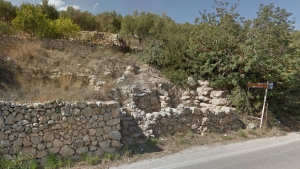
At the road connecting Piskokefalo and Sitia we meet the remains of an excavated two-storey Minoan mansion. We can still discern the remnants of rooms, stairs and the protective boulders coming from the neighbouring river of Pantelopotamos or the sea.
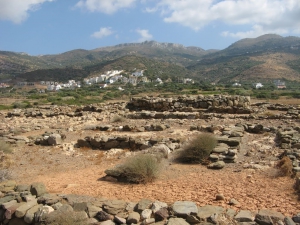
The ruins of the largest Minoan cemetery in Crete have been discovered in this area with 252 graves from the early Minoan period, 1800 vases and many artefacts buried with the dead.
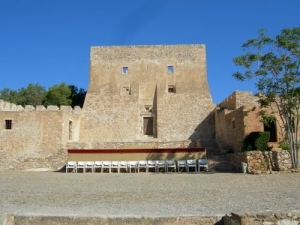
Castle Kazarma (Casa di Arma) is built on a hill near the port of Sitia, reminding of the old times that it protected the town. The fort is the only surviving part of the old town walls, which were destroyed by the Venetians.
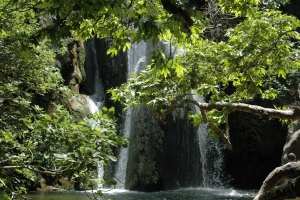
The amazing gorge of Richtis is located in Lasithi Prefecture, on the north side, between Agios Nikolaos and Sitia. It starts just outside the village Exo Mouliana and ends at the Richtis beach, east of the village of Kalabro. The total length of the route is approximately 3 kilometers and the elevation difference between the starting point and the beach is about 350 meters. The gorge, even in summer, has enough water, which is used by locals.
- 1
- 2












































































